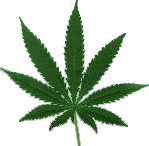


Report Shows Junk Science Drove America to Workplace Drug Testing
Friday, February 4, 2000
by ROBYN BLUMNER
In the 1950s, employers spooked by the Red Menace instituted mandatory loyalty oaths, forcing employees to forswear any ties to communism. In the 1990s, the drug scourge had replaced communism as the great looming societal threat, and the pee-in-a-cup employee drug screen became de rigueur.
But the march of time has a way of exposing baseless hysteria. Just as the loyalty oath has been shelved as an overblown reaction to the Cold War, so will the drug test soon become an abandoned relic of the war on drugs. While drug testing exploded during the past decade, with the rate of major U.S. companies engaging in it rising from 21 percent in 1987 to 81 percent in 1996, there are compelling reasons why drug testing in corporate America has plateaued and may be starting to decline.
Primary among them is that the need for massive drug screening was based on junk science to begin with, a fact that is becoming self-evident to cost-conscious human resources departments.
We've all heard the statistics: Drug-abusing employees cause $100 billion in lost productivity. Workers who use drugs have 2.5 times more absences, are 3.6 times more likely to have an accident in the workplace and are five times more likely to file a claim for worker compensation. These facts and figures appear to directly impact the bottom line. Ignoring such a serious drag on the workplace would be irresponsible. So businesses bought in big time-to the tune of $300 million per year for drug-testing programs alone.
The problem is, the facts are fiction.
A report by the American Civil Liberties Union investigating the derivation of the numbers exposes the anatomy of a lie. The lost productivity figures that government officials and the drug-testing industry waved around to pronounce a crisis were based on little more than wishful thinking.
Promoters of drug testing in the 1980s claimed that an annual $33 billion in lost productivity could be attributable to drug users in the workplace. That statistic came from a 1984 report by the Research Triangle Institute, a research organization based in North Carolina. In the government-funded study, researchers compared the yearly income of households that contained someone who either currently or at one time used marijuana daily with the annual income of all other households. On average it was found that the marijuana-using household earned less income. That difference was then multiplied by the number of daily marijuana users in the work force-totaling $33 billion-which became the amount of the "lost productivity" attributable to drugs. Over time the figure was increased to $60 billion and then $100 billion "to control for the estimated cost of inflation."
According to Lewis Maltby, president of the National Workrights Institute in Princeton, N.J., and the author of the ACLU's report, "RTI's methodology is so bad that it's dishonest." The researchers didn't even attempt to compare people with similar earning capacities. "The entire difference in household income between a brain surgeon who drinks martinis and a ditch digger who smokes marijuana," said Maltby, "was attributed to marijuana smoking."
Even more preposterous is that the lost productivity figure was promoted as definitive proof of the evil drugs do, despite the other findings of the RTI study that found no income differential between households with and without current users of marijuana. There was also no difference in the incomes of households with current or former users of illicit drugs other than marijuana and non-drug-using households.
The excessive absenteeism, workplace accidents and worker compensation claims were no sounder. Maltby's report tracked the first use of those figures to a 1972 speech given by an unidentified speaker to executives at the Firestone Tire & Rubber Co. Like the game in which each time a message gets passed it gets altered, by 1983 that speech had transmogrified into the non-existent "Firestone Study" and was widely pointed to as an authoritative source for research findings that drug-using employees were absent more often and caused more on-the-job accidents.
When you examine the real science, the numbers tell a very different story. The National Academy of Sciences published a report in1994 that analyzed the actual empirical evidence. Its conclusion? "The data . . . do not provide clear evidence of the deleterious effects of drugs other than alcohol on safety and other job performance indicators."
Government officials have a vested interest in getting corporate America to underwrite their war on drugs. To that end they've disingenuously lumped together employees who come to work impaired by drug use or alcohol with employees who use drugs off the job, labeling them collectively bad for business. The real questions for managers today are: How much lost productivity is attributable to resources diverted for universal or random drug testing, and how many excellent employees have been fired or never hired due to invasive drug screenings? Savvy stockholders might be interested.
© Copyright 2000, The Salt Lake Tribune.
Return to the Vegetable Sacrifice page, return to the main menu, or don't